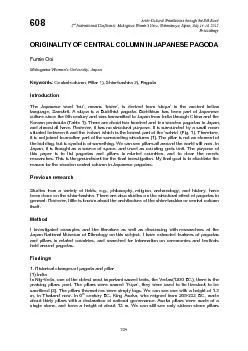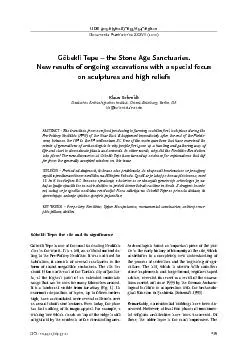PDF-including the remains which consist of only the top of pillars (Fig. 3
Author : celsa-spraggs | Published Date : 2015-09-19
325 327 24 The central column at the shine in Izumo and the one in Kamosu do not support the ridge beam They are thought to be symbolized spirits There are differences
Presentation Embed Code
Download Presentation
Download Presentation The PPT/PDF document "including the remains which consist of o..." is the property of its rightful owner. Permission is granted to download and print the materials on this website for personal, non-commercial use only, and to display it on your personal computer provided you do not modify the materials and that you retain all copyright notices contained in the materials. By downloading content from our website, you accept the terms of this agreement.
including the remains which consist of only the top of pillars (Fig. 3: Transcript
Download Rules Of Document
"including the remains which consist of only the top of pillars (Fig. 3"The content belongs to its owner. You may download and print it for personal use, without modification, and keep all copyright notices. By downloading, you agree to these terms.
Related Documents














